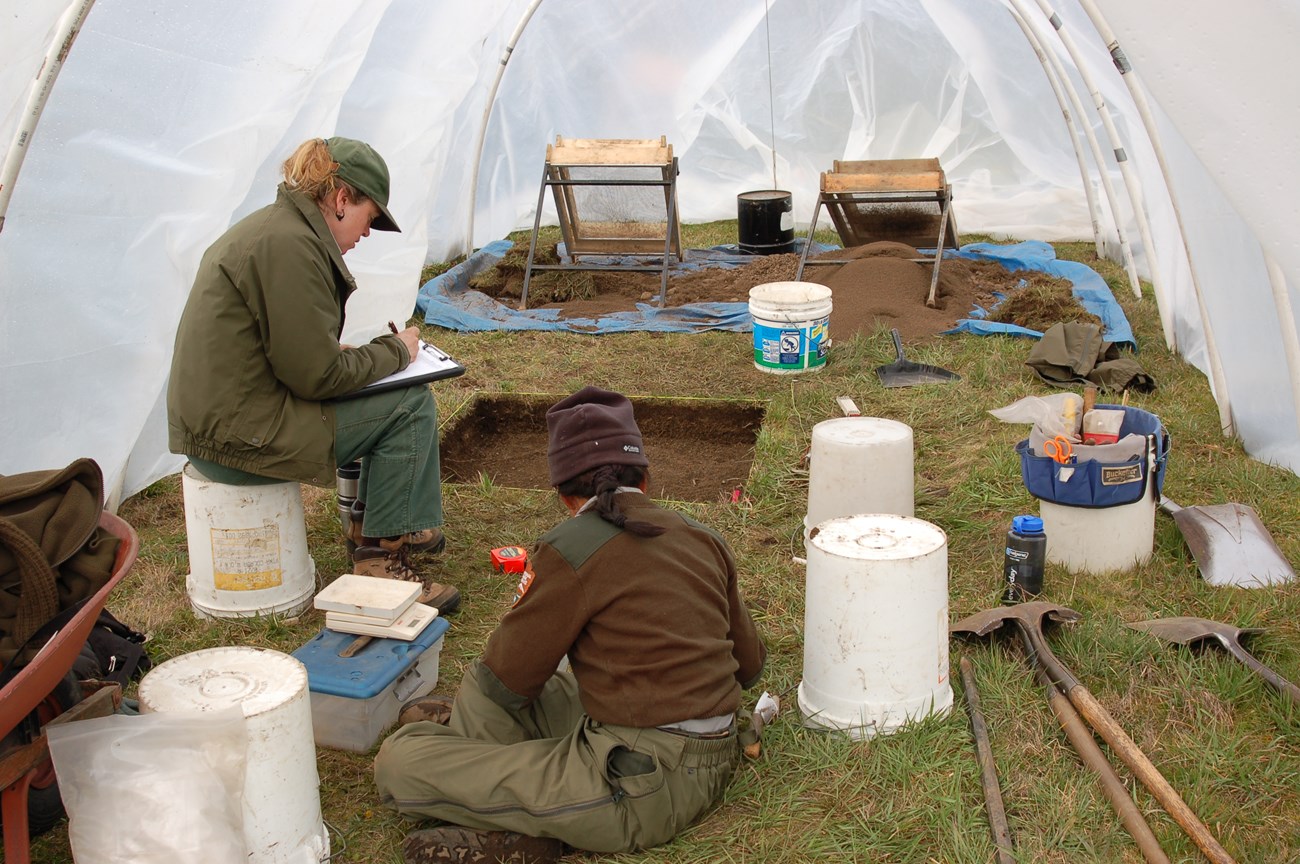Last updated: March 6, 2023
Article
Who Are Archeologists?

Archeologists look at old things and places to investigate how people lived in the past. Archeologists are a hardy bunch. They dig everywhere, including in old garbage piles and toilets, for clues about how people lived. They seem to know something about everything people in the past did: how they made tools, why they moved around, and what kinds of foods they ate.
Do archeologists study dinosaurs?
- Rawr, no! Paleontologists study these very ancient animals and their environments, which lived on Earth way before our human ancestors came on the scene.
Do archeologists study rocks?
- Yes! Archeologists know how to identify rocks, soil, and earth formations. Geologists, however, are the real experts in this field.
Do archeologists study people?
- Yes! Archeologists are anthropologists, or people who study people!

Keep clicking on the list below to find out who's on the field crew team.

Also called curators and archeological technicians, collections specialists take care of excavation records and artifacts.
Collections specialists work everywhere archeological collections go, including museums, historical societies, colleges and universities, and parks. They help to preserve archeological materials, and they help researchers and the public learn from the collections.

Zooarcheologists study animal remains, or fauna, from archeological sites. Their work shows what people ate, the animals they hunted and raised, and about their health. Researchers can also use faunal data to learn about ecosystems in the past and changes over time.
Read what archeologists say:
Archeology at Yellowstone Lake revealed the significance of fish and other animals to local populations in the past.

Learn how archeologists solved a mystery:
Nobody knew what happened to the so-called English China Wreck, but archeologists figured it out.

Learn more:
By comparing a variety of historical sources with oral history, archeologists and Native Americans located the site of the Sand Creek Massacre.

Learn more:
Archeologists have found that people have shaped and have been shaped by the land, water, plants, and animals on the Kuka’iwa’a landshelf.

See what archeologists say:
Oral historians spoke with Japanese Americans who were interred at Manzanar during World War II to learn about their experiences. They met at the Barracks Exhibit.
